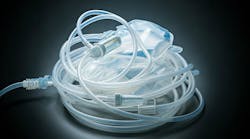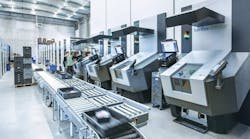The University of Connecticut’s Michael Pikal, PhD, has researched pharmaceutical freeze-drying for decades, having helped to develop and patent various leading technologies, including the Smart Freeze-Dryer (see, for example, “PAT Advances Freeze Dryer Control”).
Among Pikal’s latest work is exploring controlled ice nucleation as a means of monitoring and controlling heat and mass transfer parameters during process scale-up. Pikal believes that techniques such as controlled ice nucleation are a critical component of applying Quality by Design principles to lyophilization and ensuring consistency in moving from lab to plant. We spoke with Pikal recently about this topic and more.
PhM: Pharmaceutical freeze-drying has traditionally been time-consuming and costly. Are we making progress in this regard? Are Quality by Design principles a pathway to continued improvement?
M.P: My view is that anything that is poorly understood tends to be classified as “time consuming and costly”. I do not believe freeze drying is currently poorly understood, although I would freely admit that not every organization that does freeze drying has experts in the area, and therefore not every freeze drying development and manufacturing organization is taking full advantage of what has been developed over the past several decades. I would also admit that we have much more to learn, but I would also assert that we are learning!
Therefore, I would argue that we have made remarkable progress in the 30 years or so I have been involved with freeze drying, and the pace of progress continues at a moderate rate. Acceleration of that progress would require more emphasis on “technology development” in industry and more support of freeze drying research in academia. Quality be Design principles are useful, in particular the systematic approach to risk assessment for the purpose of defining what aspects are potential problem areas and which are not and can be simply addressed by historical knowledge and “common sense”. In fact, it is my view that most aspects of “QbD” have been long practiced, even if not with the current protocol, by at least the best of the scientists/engineers with the best companies. Quality by Accident has never been acceptable
PhM: What’s your assessment of the PAT technologies currently available for lyo process monitoring in general? Are good technologies available and on the market, or do you hope to see some advances?
M.P.: There have long been good PAT technologies, particularly for determining the end point of primary drying, which is one of the main issues arising from scale-up differences in proceeding from the laboratory to manufacturing. The use of comparative pressure measurement, Pirani vs. Differential Capacitance Manometer, to evaluate vapor composition in the chamber and therefore to determine the end point of primary drying was first suggested to me by Steve Nail, then of Upjohn, almost 30 years ago. [Note: See “At Baxter, Testing the Limits of Lyo Processes and Equipment,” for an interview with Nail and colleague Lisa Hardwick.] It now appears that some companies are taking advantage of this simple, cheap, and very effective technology.
We still have difficulty measuring meaningful product temperature. It has long been known that placing temperature sensors in product vials gives very misleading and often useless information. Fortunately, there are emerging technologies (MTM, or Manometric Temperature Measurement; TDLAS, or Tunable Diode Laser Absorption Spectroscopy) that show promise, even for manufacturing environments.
Finally, I would like to emphasize that while a large number of sophisticated techniques have been studied in the laboratory, most of these techniques are useless in manufacturing as PAT even though they may be extremely useful in designing a formulation and/or process in the laboratory. We (Dr. Sajal Patel and I) recently reviewed this area, and I would refer the interested parties to the literature for more detail. [Note: Here is one recent article by Pikal, Patel, and Doen—registration required.]
PhM: Manufacturers continue to have many heat and mass transfer scale-up issues regarding lyophilization. You suggest that “one may minimize the freezing difference between laboratory and manufacturing by annealing in the frozen state.” How easily is this done?
M.P.: In principle, it is rather easy. You simply investigate a “design space” of temperature between the Tg’ and the onset of the ice melt endotherm and a range of times from a few hours to the upper limit of what is practical, likely about six hours. Here, a DoE can be useful. The problem is that annealing will require more time and may facilitate degradation problems, particularly if the buffer system is prone to crystallize and shift pH. Generally, degradation is not an issue, but clearly the development scientist needs to very carefully evaluate the impact of annealing on stability, including storage stability.
PhM: Another solution is controlled ice nucleation. Given that ice nucleation is, as you’ve said, normally “random” and uncontrolled, how is the control achieved and maintained through scale-up?
M.P.: Controlled ice nucleation involves cooling the entire batch of vials, whether in development or manufacturing to a given selected temperature below the equilibrium freezing point but yet above the temperature at which spontaneous heterogeneous nucleation may occur. This is usually in the range of -5°C to -10°C. Next, the super-cooled solution is nucleated (or seeded) with ice crystals, by whatever technique is used. In reality, although many methods have been proposed, there are only two methods that I have confidence will work in both laboratory and manufacturing (ice-fog and the Praxair depressurization technique).
PhM: What are some of the pros and cons of both these techniques?
M.P.: The ice-fog technique is a viable technique which we have addressed in several recent publications. It involves first cooling to the desired temperature below the equilibrium freezing point, say -5°C, reducing the pressure to around 50 Torr, and then introducing cold nitrogen gas (through a liquid nitrogen heat exchanger) into the chamber. The cold gas in the humid chamber forms an ice fog, which is then forced into the vials thereby seeding ice crystallization in the super-cooled solution. I have no doubt that this method would be adaptable to manufacturing at any scale, and would likely involve introduction of the cold nitrogen through the CIP system. However, the ice-fog method has not been used in manufacturing to the best of my knowledge, and based on our experiment in various laboratory experiments, there would need to be at least some empirical development work to optimize the process for manufacturing.
The Praxair depressurization technique involves first reducing the product temperature in all vials to a selected value, say -5°C while introducing a pressure about 1 atmosphere above ambient. When thermal equilibrium has been achieved, the excess pressure is quickly (i.e., within seconds) released, which then causes ice crystals to form at the top of the solutions and then propagate throughout the vial within seconds. All vials form ice at essentially the same time, as contrasted with the ice-fog technique where all vials are nucleated within a minute or two. Thus, at least in principle, the depressurization technique will provide more uniform ice crystal size and morphology (see photos), and it is also my opinion that scale-up will be less problematic than with the ice-fog. However, I don’t believe there is full-scale manufacturing experience with any ice-nucleation technology at this point, but that will change very soon. [Note: A video illustrating this depressurization technique can be viewed here.]
PhM: What’s the state of equipment for conducting these techniques (especially involving depressurization), and is there consistency between lab equipment and that used in commercial manufacture?
M.P.: There is no special equipment of any significance required for either method of controlled ice-nucleation in a manufacturing environment. Manufacturing freeze dryers already have the CIP system through which one would pass the cold nitrogen for the ice-fog, and all (reasonable) commercial freeze dryers are already equipped for steam sterilization, which means they can withstand the pressures above ambient that are required for the depressurization method. Currently, laboratory dryers cannot normally accommodate the overpressure used in the depressurization technique. However, in the next few months, SP Industries will be introducing the LyoStar III, which will have the option of the Praxair depressurization ice nucleation control technology. We are due to receive a prototype in about a month at UConn, and we are quite excited to being testing the new dryer and the depressurization ice nucleation technology. Indeed, we have a research project planned to critically compare the ice-fog and the depressurization methodologies.





